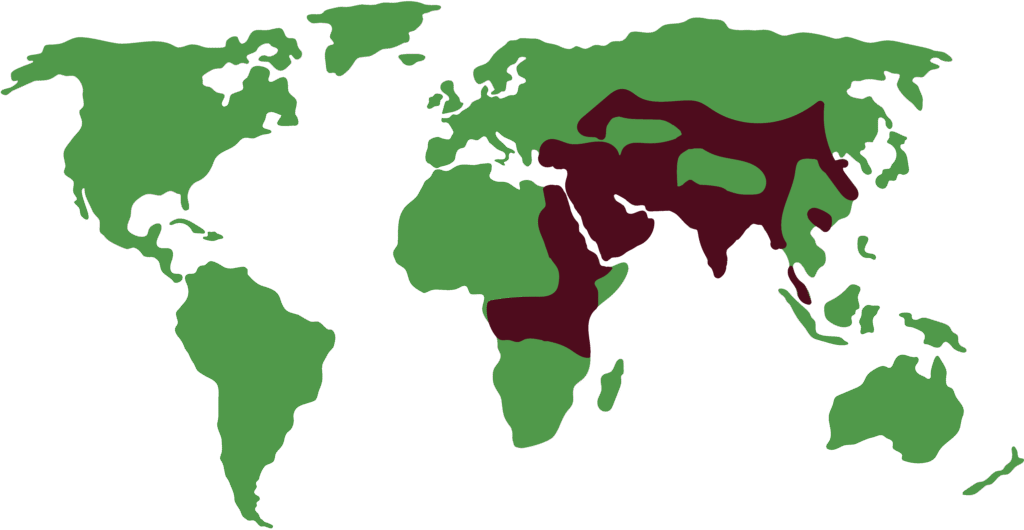STEPPE EAGLE
Aquila nipalensis

length

160 – 214 cm
weight

2,3 – 4,9 kg
Lifespan

41 years
The species known as the steppe eagle belongs to the genus Aquila and the family Accipitridae. It is a large migratory bird of prey whose cycle, behaviour and habitat make it very interesting for education in zoos.
General characteristics
The steppe eagle measures approximately 60 to 81 cm in length, with a wingspan that can reach between 160 and 214 cm.
Females are usually slightly larger and heavier than males.
Adult plumage is mostly dark brown, with well-feathered legs.
In flight, it displays broad wings and a relatively shorter, almost wedge-shaped tail.
Juveniles have lighter tones or more visible contrasts than adults.
Feeding
Its diet focuses on medium-sized mammals (such as ground squirrels), but it can also feed on dead prey, adapting to what the environment has to offer.
Behaviour
It is usually seen alone or in pairs during breeding season.
It migrates along certain key routes and its migratory flights can be extensive, covering thousands of kilometres and overcoming obstacles such as the Red Sea, the Gobi Desert and the Himalayan mountain range.
During the day, it glides and takes advantage of thermal currents to move with little energy.
It defends its breeding territory and does not interact with conspecifics outside the breeding pair.
Reproduction
The pair builds its nest on open ground or low platforms, which is unusual for eagles but very typical for this species.
It lays between 1 and 3 eggs, from which one or two healthy chicks usually hatch.
The incubation period is around 45 days.
Threats
Threats include habitat loss due to intensive farming, electrocution on power lines, accidental poisoning, and the decline of their key prey species.
Distribution
This species breeds in extensive steppe and open areas of southern Russia, Central Asia and Mongolia.
In winter, it migrates to Africa, the Middle East, India and Southeast Asia. It prefers open, dry or semi-desert habitats, such as steppes, arid savannahs or plains with sparse dense vegetation.

Did you know?
During migration, the steppe eagle can travel more than 10,000 km from its breeding grounds to its wintering sites.
This species specialises in hunting ground squirrels in the steppes, becoming completely dependent on them in some regions.
The legs of this eagle are fully feathered down to the toes (‘feathered boots’), an adaptation that protects it from the cold and hard ground of its steppe habitats.
Conservation status
